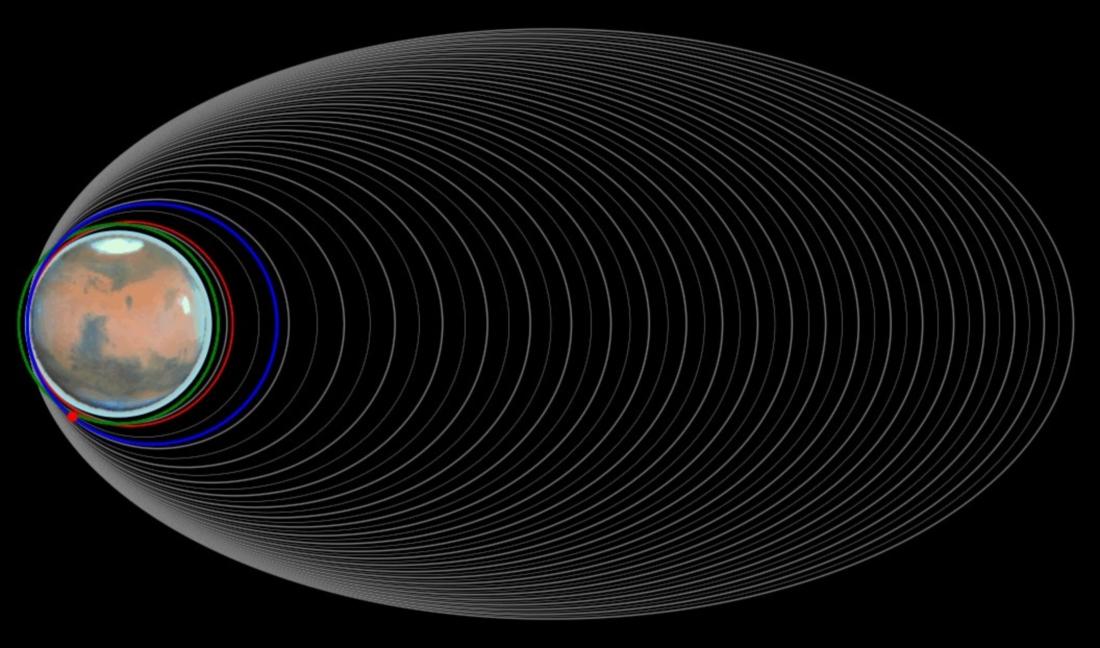ExoMars TGO, a key to the mission

In March 2016, the European Space Agency (ESA) launched the ExoMars mission. Since reaching the Red Planet, the Trace Gas Orbiter has made tremendous progress and will soon go into its definitive orbit around Mars.
In March 2017, the orbiter started a series of maneuvers to enter in the so called aerobraking phase, allowing it to slow down using the Mars’ thin atmosphere and to reach a favorable orbit for the science mission.
Once the TGO has reached its final orbit, it will stay there until 2022, serving as a telecommunications relay for future missions. One of its tasks will be to relay data from ESA’s ExoMars 2020 mission, which will consist of a European rover and a Russian surface platform, slated for deployment in the spring of 2021.
The search for life on Mars continues

The rover in the ExoMars 2020 mission, an autonomous vehicle about the size of a golf cart, will continue the initial assignment by drilling into the Martian soil to a depth of two meters – a world first! The samples extracted in this way will then be analyzed in a mini-lab inside the rover, to discover the existence of any bacteria or fossils. This information will then transit via the TGO, which , in addition to its mission of detecting trace gases, is also used as a communications relay between the Earth and Martian rovers sent by both NASA and ESA. The European rover should be operational on Mars in the spring of 2021.
Second meeting with Mario Montagna from Thales Alenia Space

Mario, we met in March 2017 after your return from the European Space Operations Center (ESOC) in Darmstadt, where you took part in the start of the aerobraking phase. What can you tell us about the TGO?
M. Montagna: Over the past year, all TGO developments were very positive. The critical aerobraking phase started on March 15, 2017, and is still in progress, as planned. Performance is in line with expectations, or even slightly better!
A year ago, we projected the end of the aerobraking phase in April 2018. Remember that this phase is needed to reduce the orbit from 24 hours (i.e., a revolution around the planet in 1 day) to 2 hours (i.e., 12 orbits a day). Another way of putting this is that we reduce the apocenter (maximum distance from the planet) from 30,000 km to 1,000 km. In fact, thanks to the TGO’s excellent performance, this phase will now end on about February 22.

Given the complicated operations over this past year, requiring more than a hundred commands per orbit, the TGO has performed very well indeed. It never experienced any problems, nor did it have to go into what we call “safe mode”.
From June to September 2017, these operations were interrupted as planned because the Sun was at the intersection between Earth and Mars (a phenomenon known as “superior conjunction”) and therefore disturbed radio communications. During this period, engineers modified the onboard software to improve the system. As soon as communications were reestablished, the new software was uploaded and the aerobraking phase restarted.

The first images should come in mid-April. Once the aerobraking phase is finished, we will have six weeks to check and reactivate the instruments, to reach the science orbit and start doing science again! Indeed just before the aerobracking started, an appetizer of science was available with a first activation of the instruments in the part of the orbit close to the Red Planet. The results were very exciting and now, finally approaching the final orbit, scientists are holding their breath to start their activities after years of design and counting on the TGO excellent performances.
Stay tuned for more “Martian” chronicles and fair wind to the ExoMars orbiter!
Copyrights:
Artistic views: © ESA/ATG medialab
Rover © Thales Alenia Space/Master Image Programmes
Cartoon: © ASTER


